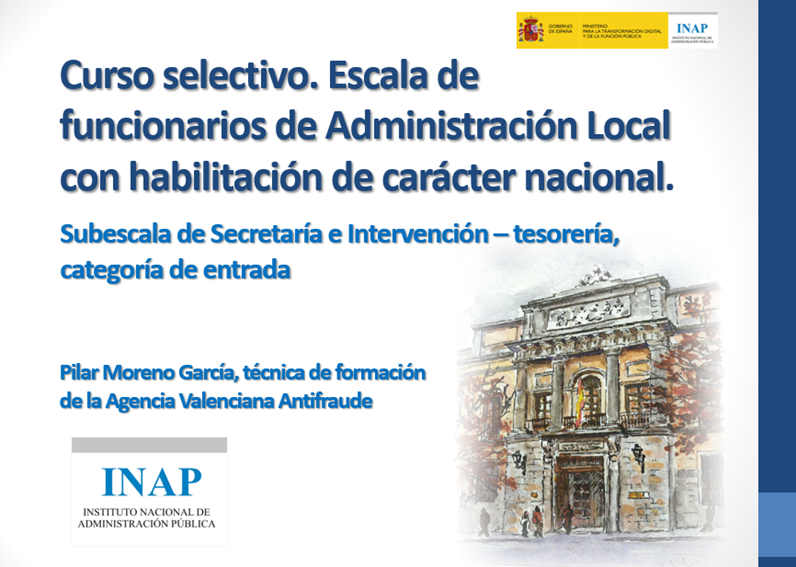Valencia. November 13, 2024. Pilar Moreno García, a specialist in the Directorate of Prevention, Training, and Documentation of the Valencian Anti-Fraud Agency (AVAF), participated online in the roundtable “Open Government and its Implementation at the Local Level: Transparency and its Relationship with Data Protection, Citizen Participation, and Integrity,” part of the selective training course for stabilizing local government officers with national-level appointments (FHCN), organized by the National Institute of Public Administration (INAP).
“From Prevention to Action: Key Tools for Building Integrity in Local Management” was the theme addressed by the AVAF specialist, where she emphasized the need for an institutional integrity system as a fundamental driver for achieving efficient, effective, and citizen-focused public administration. This approach aligns with the goals of INAP’s selective training course, which covers essential topics for trainee officials, providing them with a solid foundation in ethical principles and key regulations.
“Integrity is the backbone of an administration committed to democratic values,” highlighted Pilar Moreno to the entry-level FHCN officers (secretaries and comptrollers – treasurers), who had the opportunity to reflect on the multiplicity of systems aimed at promoting integrity from various perspectives and the necessity of consolidating them into a single cross-cutting framework.
From the involvement of governing bodies to the proper implementation of internal information systems and external channels, tools must be developed to build a genuine public integrity system. These tools not only comply with current regulations but also represent a strategic measure to enhance the quality of public management.
To facilitate the understanding and application of these measures, AVAF offered trainee officials a “survival kit” for integrity management, which includes an extensive bibliography and training resources. Among the materials provided are guides, recommendations, and the Code of Integrity of the Valencian Community, available for download here.
The training specialist’s intervention in the INAP course focused not only on imparting theoretical knowledge but also on fostering a culture of integrity and ethics to strengthen local administration.
Through initiatives like this, AVAF reaffirms its commitment to the training and awareness of new national officers, advocating for a public administration that serves as a model of integrity, transparency, and good governance.





